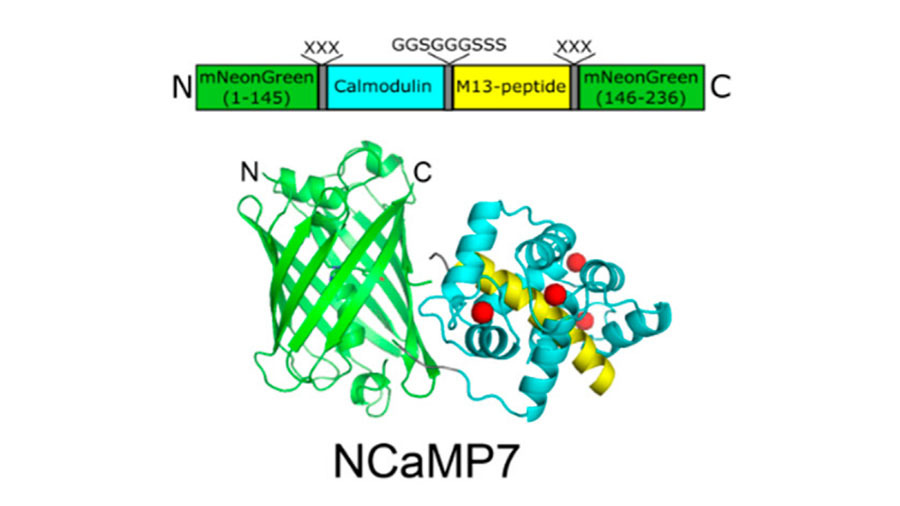As part of an international team, scientists at the Kurchatov Institute received a new bright protein indicator to visualize the processes that occur in brain neurons.This was reported in the journal International Journal of Molecular Science.
A genetically encoded calcium indicator developed by scientists is a two-part protein. The sensor protein “senses” how the calcium concentration changes, and the fluorescent protein “interprets” these data into a signal. Such indicators allow you to monitor some cellular processes in a living organism, including the transmission of a nerve impulse in the brain.
“The uniqueness of our work lies in the fact that mNeonGreen protein was used as the fluorescent part to create a new calcium indicator. At the moment, it is one of the brightest fluorescent proteins in the green spectrum. Its use provided our indicator with a record brightness, which is almost one and a half times higher than that of analogues, ”said Alena Nikolaeva, an engineer and researcher at the Resource Center for Molecular and Cellular Biology of the Kurchatov Complex of NBIKS Nature-Like Technologies.
As reported by Alena Nikolaev, the luminous protein mNeonGreenis a derivative of the protein originally isolated from the European lancelet Branchiostoma lanceolatum - the lowest chord animal that lives in the ocean.
The new indicator is called NCaMP. To study the kinetic characteristics of the new protein, the NCaMP gene was introduced into the genome of a model organism - Escherichia coli bacteria.
- Artificial luminous protein NCaMP7
- © SIC "Kurchatov Institute"
After optimization with several rounds of directional evolution, the version with the best biochemical characteristics, NCaMP7, was obtained.
After successfully testing the effectiveness of artificial protein on nerve cells, animal experiments began. At the final stage, transgenic animals were obtained that carried the NCaMP7 gene in their DNA.
The experimental results confirmed that the new indicator allows you to monitor the activity of neurons of the cerebral cortex in mice. So the protein of a primitive marine animal was useful for studying the most complex processes of transmission of nerve impulses in mammals, the researchers noted.
“The implementation of such a large-scale multidisciplinary project was made possible thanks to the joint work of experts from various fields of science. It was attended by molecular biologists, biochemists, cell biologists, specialists in X-ray crystallography and genetic engineering. This is precisely what explains the vastness and depth of the results, ”Alyona Nikolaeva emphasized.

